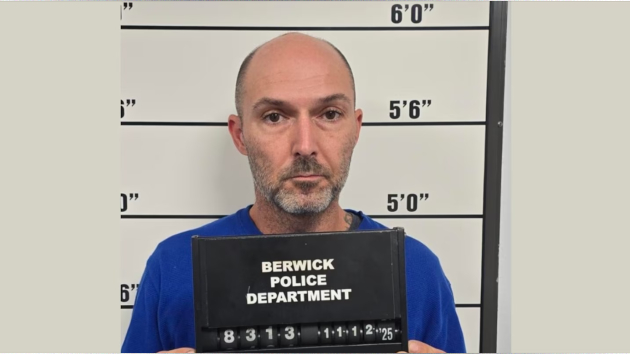Lead in the water: How some of America’s water became too dangerous to drink
Written by ABC Audio ALL RIGHTS RESERVED on April 20, 2023

(NEW YORK) — Nearly 60 million Americans may not know they’re drinking from toxic metal in present day, according to the Natural Resources Defense Council, Inc.
The U.S. currently holds approximately 9.2 lead service lines underground, according to a recent survey released by the U.S. Environmental Protection Agency.
As the U.S. faces crisis after crisis in the country’s water infrastructure system, lead service lines continue to be a silent and deadly consequence – a decision determined by U.S. engineers more than 150 years ago.
History
The engineering concept was originally initiated in the Ancient Roman era – lead pipes were designed to channel clean water into its city and sweep out sewage.
In the 1800s, the ancient Roman conception was later adopted by the U.S., which would also install lead pipes nationwide to provide indoor plumbing to citizens.
“It created a public health benefit because we had clean water coming into our homes to take baths and wipe out waterborne disease – and that same water could sweep away our sewage,” Marc Edwards, professor of engineering at Virginia Tech, told ABC News.
For America, the nation’s goal was to deliver water in quantity — which lead pipes helped achieve due to their inexpensive, durable, non-leaking and long-lasting benefits.
Those lead pipes later became an environmental disaster as health experts realized their poisonous dangers, including miscarriages and fetal deaths.
“Around the 1920s, many cities required if you wanted to connect your house to the water main you had to use a lead pipe by law,” Edwards said.
Yet, several cities were still installing lead pipes, including Chicago – which didn’t stop installing lead pipes until 1986 when the Safe Drinking Water Act was amended, the EPA said.
Although the 1986 revised law banned lead, the pipes already installed were not required to be replaced, according to the EPA.
Lead is a tasteless, colorless and odorless chemical element that cannot be detected in the water. Health experts have determined there is ‘no safe level of lead’ in the human body. Children are often the most vulnerable as lead exposure can lead to anemia, brain damage, and among other issues in cognitive progress, according to the Centers for Disease Control and Prevention.
Present day health crisis
Edwards, who testified before Congress of the dangers of lead poisoning in Washington, D.C., in 2004, also helped to discover the Flint, Michigan, water crisis and said that he knew more water crises were impending.
Nearly 1 in 4 Flint residents may have PTSD after water crisis, study finds
Following Flint and Washington, D.C. also came Chicago, Newark, New Jersey, Benton Harbor, Michigan and Detroit.
Illinois is the second largest state to have the most lead pipes with more than 1 million still in service – Chicago alone has nearly 400,000, according to the EPA survey released in early April. Florida emerged as the state with the most lead service lines in the nation, beating out Illinois with 1,159,300 lead pipes.
Gina Ramirez, a third generation East Chicago native, says she and her family have strictly drank and cooked with bottled water for the last 30 years — because their home is connected to lead service lines. Ramirez, who also serves as the Midwest Outreach Manager for the Natural Resources Defense Council, NRDC, says her family’s neighborhood is mostly low-income, people of color.
“I mean a lot of families are just trying to put food on the table. There’s a lot of undocumented residences, undocumented residents in my neighborhood as well, so they don’t want to like, bring the alarm on that situation,” Ramirez said
For Ramirez, the process of having her pipes replaced has created a growing frustration as it’s taken her family two years before being approved for Chicago’s Lead Service Line equity program.
Illinois lawmakers have given Chicago nearly 50 years to replace all lead pipes compared to other cities like Flint, Benton Harbor and Newark, that has replaced nearly all its pipes in under five years.
Michigan to replace lead pipes in Benton Harbor in 18 months amid drinking water crisis
“That’s part of what it’s like living in a community where you have a tax on your health from outside your home and within your home. What kind of anxiety that can be, being raised in a home where you have to drink bottled water where you can’t trust your tap. That has to have long-term implications on your emotional health,” Ramirez says.
In late 2021, President Joe Biden signed a bipartisan infrastructure bill totaling $1.2 trillion, $15 billion of which will be targeted towards replacing lead water pipes and $50 billion will go toward fixing the nation’s water infrastructure system. As the Biden administration prioritizes lead pipe replacements nationwide, many Americans like Gina suggest the damage is already done.
Newark residents still aren’t convinced their water is safe to drink after lead water crisis
“This is a public health crisis,” Ramirez said. “I’m hopeful for these infrastructure dollars to go to lead service line replacements — we need the money to come into these communities who are disproportionately suffering health impacts and replace those lead service lines first.”
Copyright © 2023, ABC Audio. All rights reserved.
 KVSP
KVSP 




